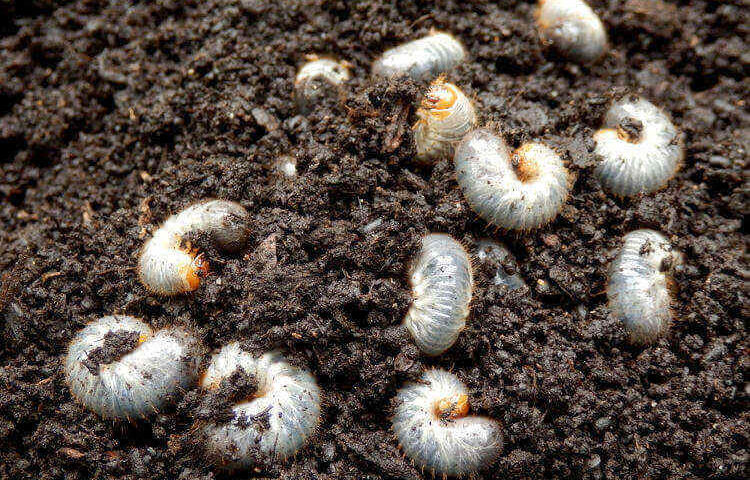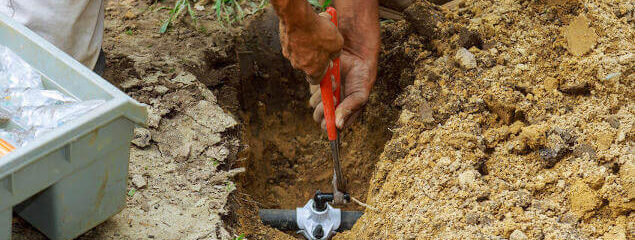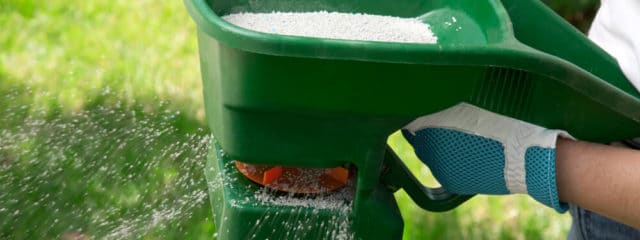After a busy spring season prepping your lawn for summer growth, nothing is quite as frustrating as seeing the lawn start to fail. What could be the cause if you’ve done everything else right? Often, the cause is summer pests. During summer, certain common lawn pests are at their strongest, and if measures aren’t taken to prevent them, your hard work could be for nothing. Here’s a closer look at what you need to know about pests and the lawn damage they can cause.
Identify Lawn Damage – Pest or Not?
How can you determine if your lawn is infested with pests, or if the lawn damage you see is from something else? Some common signs that your lawn is infected by a pest include:
- Visible insects in the grass or turf
- Thin or missing roots
- Holes in the soil
- Brown spots
- Dead or dying patches of grass
- Wilting blades in a lawn that’s well watered
- Chewing marks on grass blades
If you’re seeing these problems, then it’s time to take a closer look at summer lawn pests and the right control measures to take to rid your lawn of them.
Types of Common Lawn Pests
If you suspect you have lawn insect pests, the next step is to determine which pests you have. Some common lawn pests to watch for include these:
Chinch Bugs
Chinch bugs feed on grass blades and stems. These tiny bugs are only about the size of the tip of a pencil, but they often travel in large numbers that makes them more visible. These bugs feed on fluids in the grass, which kills the blade. They can kill the lawn quickly if you do not take decisive measures against them.
Cutworms and Armyworms
Both cutworms and armyworms are caterpillars, these worms feed on the leaves of your grass. They tend to reside in crop fields more than lawns, but when they have large numbers they can descent onto lawns as well. The devastation they create is quite extensive.
Ants
Ants may be surprising when listed as a lawn pest, but they can cause trouble. Certain types of ants, like fire ants, that build large mounds leave grass roots exposed, and this can cause serious damage. While ants typically do not attack the grass itself, their work can lead to damage. In addition, some ants, like carpenter ants or fire ants, pose a hazard to your home or your family.
Grubs
Grubs are the larvae of scarab beetles. The beetles lay their eggs in the summer in the lawn, and the larvae feed on the roots of the lawn throughout the fall. During the winter, they dig deep into the soil to stay alive. In the spring, they come back up and start eating the roots again. If left unchecked, grubs can decimate your lawn by causing damage in two different seasons.
Billbugs
Billbugs are one of the hardest summer lawn pests to spot because they live in the thatch layer and are quite small. These bugs live in the leaves that often sit on the edge of lawns. They lay their eggs on the grass in the spring, and the larvae eat the grass at its point of growth, causing the blade to die.
Sod Webworm
The sod webworm eats grass blades and stems. Their presence also causes birds to forage for worms, which creates holes in the turf. These worms are the larvae of a gray-tan adult moth that appears to have a double snout. If you see the moths, chances are the worms are also present.
What Can Senske Do to Help?
If you suspect that you have lawn pests, professional pest control is important. Senske has a team of lawn experts who are able to identify common lawn pests and provide effective control solutions to help deal with the problem. By taking decisive action at the first sign of summer lawn pests, you can ensure that your grass gets the best possible chance to thrive.
Do you suspect you have pests targeting your lawn? Reach out to Senske Services for a free quote on lawn insect control, and take back your lawn.





